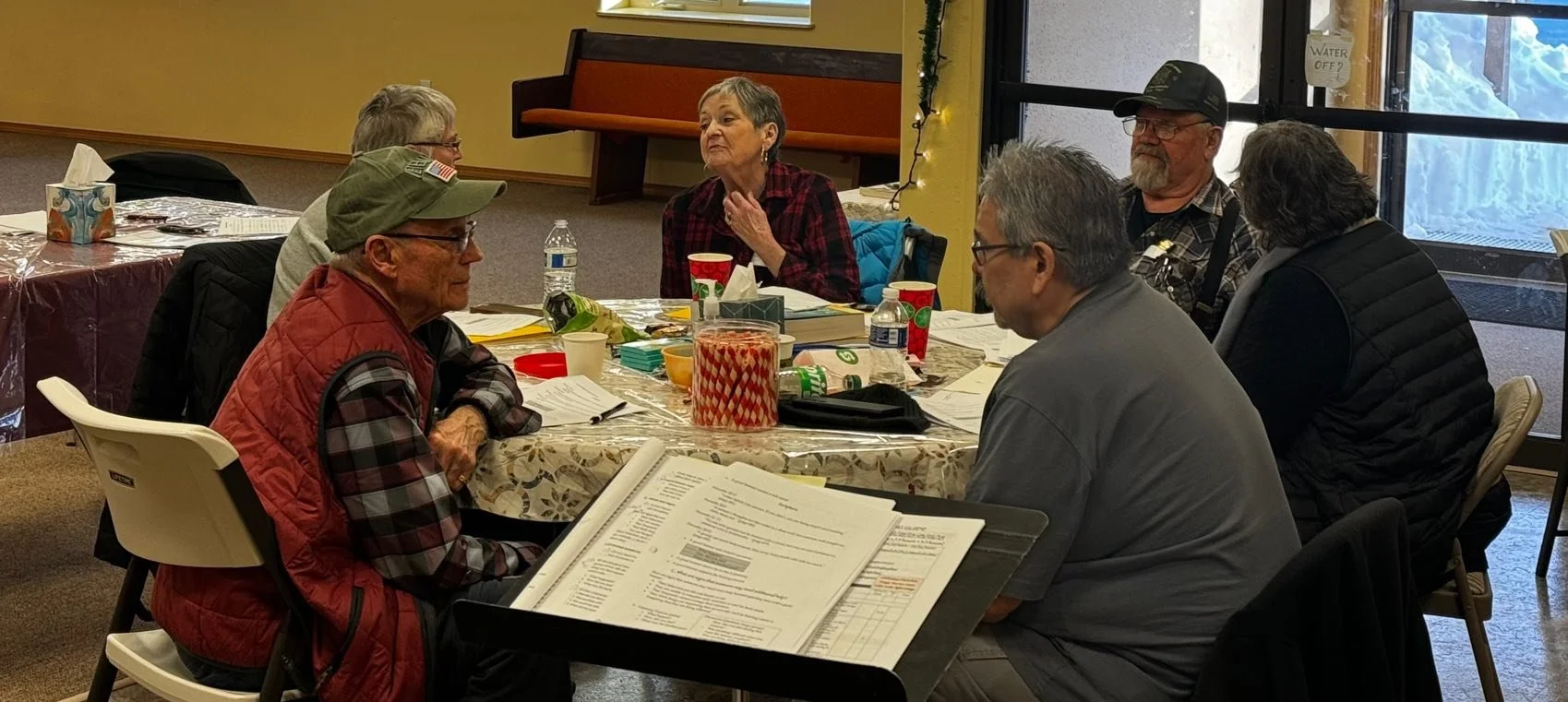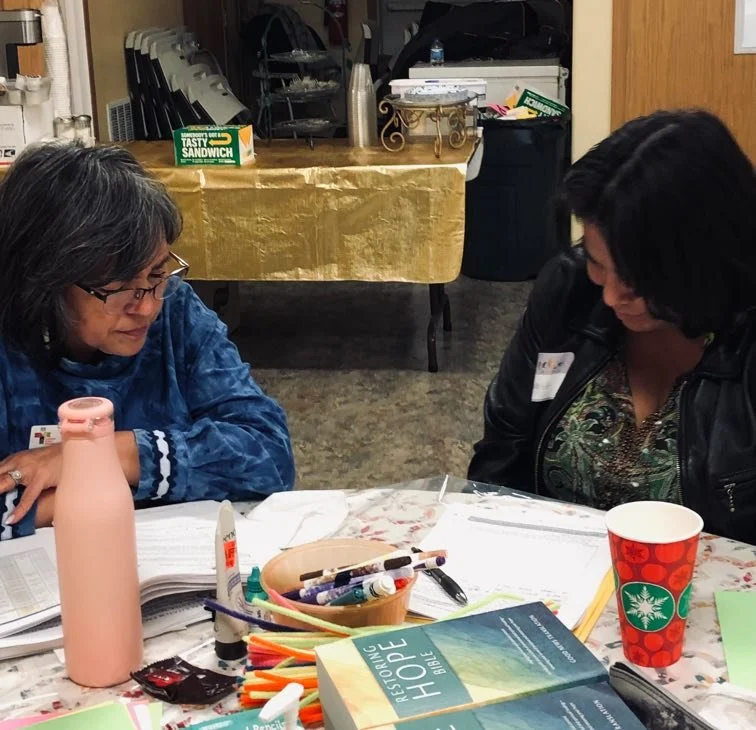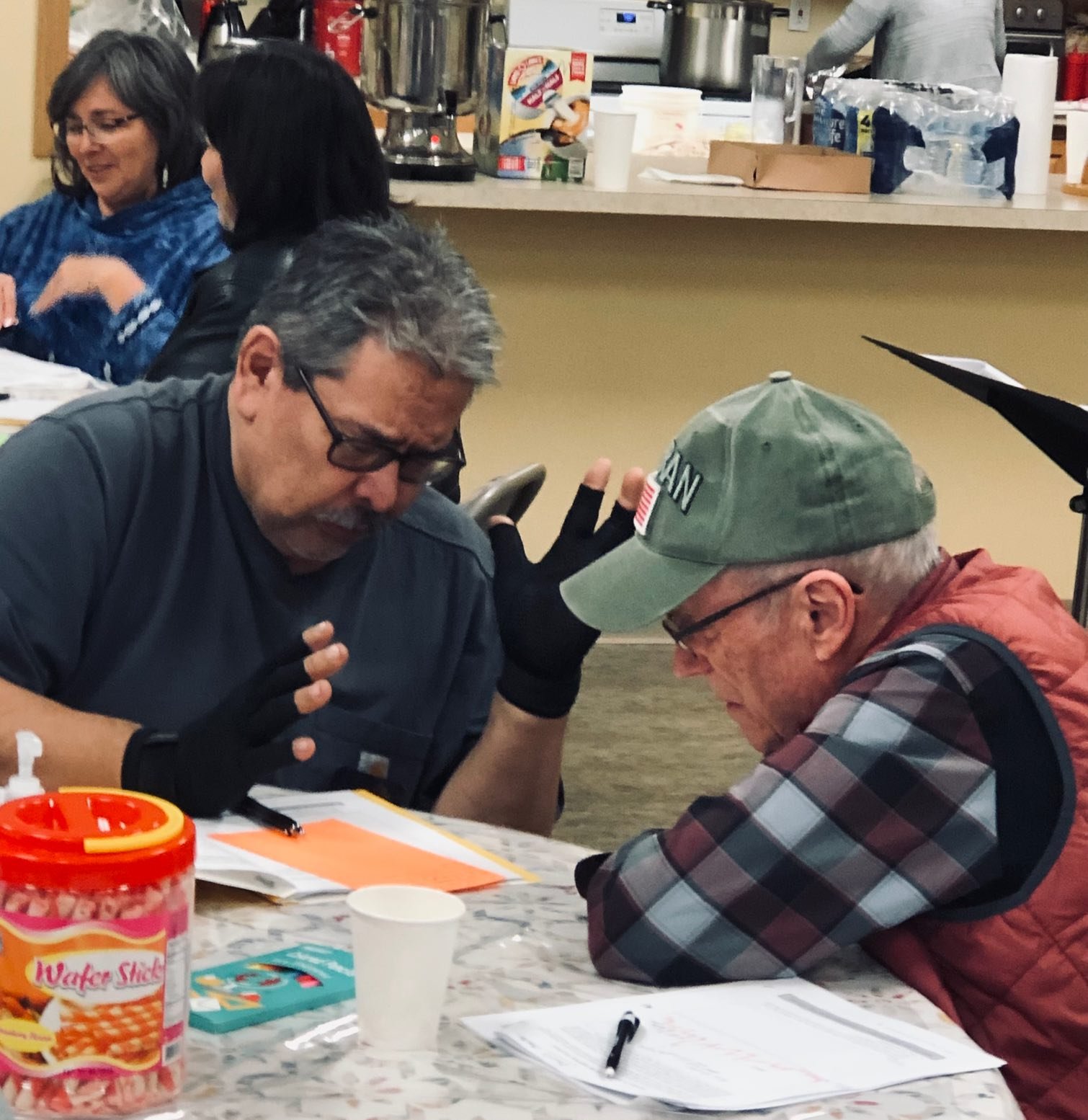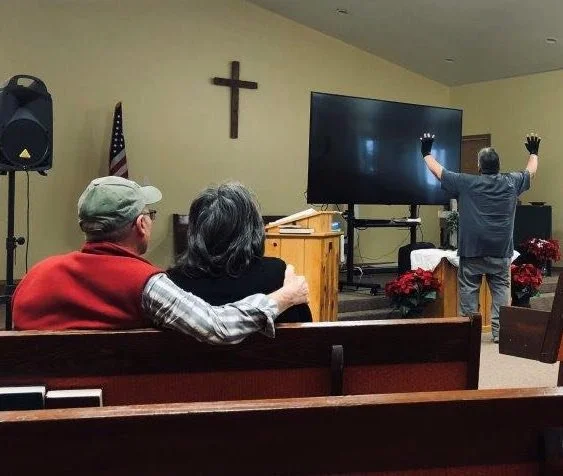Community Healing Through Scripture: A Journey in Copper Center, Alaska
The Copper Center Community Chapel is bathed in the morning sun, allowing the natural evergreen shadows to paint over the side of the building welcoming participants to Healing the Wounds of Trauma (Healing Group) on March 02, 2024. The morning temperature dipped to minus seven degrees Fahrenheit. While a chilly morning outside, participants were warmly welcomed!
Healing the Wounds of Trauma (Healing Group) in Copper Center, Alaska was held February 29, 2024 through March 02, 2024. Held at the Copper River Community Chapel, 15 community members registered with eight completing the three-day training. Pastor Ron Paull hosted and attended the Healing Group with his wife, Jean Paull. Pastor Ron believes that addressing trauma will build a stronger community:
“The primary value for me was the opportunity to dialog with my folks at a level that will help both my wife and I minister to their hearts more effectively. This was a time with the potential to create a stronger bond of fellowship among our people.”
Copper Center, Alaska participants, Prayer Warrior, and a facilitator review a Healing Group lesson in small groups on how a good listener asks three questions: What happened? How did you feel? What was the hardest part for you?
Learn more about The Healing Wounds of Trauma and find an upcoming session near you.
The six core lessons framed this training with a strong traditional welcome that included Katherine McConkey, Director of Tribal Community Services, Copper River Native Association and Tribal Court Judge; Lexis Martin, President/Elected Council Member, the Native Village of Kluti-Kaah as well as Robert Heffle, LIM CEO and Gene Amidon, Prayer Warrior. The first day also included the lesson: “what is a wound of the heart.” The second day included four lessons: “what can help our heart wounds heal,” “what happens when someone is grieving,” “if God loves us, why do we suffer,” and closed with “bringing your pain to the cross.” The third day completed with the final two lessons: “how can we forgive others” and “looking back and looking forward.”
Copper Center, Alaska participants (Pastor Ron Paull, center, and Jean Paull, far right) review a Healing Group lesson in small groups on What can help our heart wounds heal.
Participants completed a pre and post assessment, coming away from the training having heard Scripture and the message of our Lord’s unfailing love and mercy (Lamentations 3: 21-24). When asked, “What did you learn or gain that you want others to know?” Participants stated:
To help others in their grief walk
That confessing and forgiveness is a form of cleansing
I learned that unforgiveness ripples out to those who love the offender. I felt this from people, but I never thought of it as a result of my unforgiveness
That God is real and for us
We all have trauma in our lives. We all process it differently. Being a good, compassionate listener is helpful in helping anyone during these times. Knowing we, ourselves, have traumas that affect us as well
Appreciate the opportunity to learn more of the heart of several of our members – by the depth of our conversations
God forgives us of our wrong doings and loves us anyway
Grief isn’t limited to losing someone through death
Lutheran Indian Ministry staff, Tanya Dolchok prays during a Healing Group lesson.
“Lutheran Indian Ministries envisions ... all nations experience the Father’s love ... fulfilling the Great Commission ... especially in rural communities like Copper Center, Alaska, aiming to build hope and healing.”
Robert Heffle added, “Lutheran Indian Ministries vision is about a day when every nation, tribe and people come to know and experience the Father’s love. That by the power of the Holy Spirit, we come alongside Native American and Alaska Native people. This is our first invitation into an Alaska Native Community. The Great Commission is the instruction of Jesus Christ to his disciples to spread the gospel to all the nations of the world. Lutheran Indian Ministries went to Copper Center, Alaska because we cannot forget those who live in our rural communities, it is one way to connect and spread the word based on Scripture, based on God’s Word. I believe we helped to build hope for healing and restoration, helping to build community by sharing in prayer and healing.”
Lutheran Indian Ministries Prayer Warrior, Gene Amidon, prays with a participant during a Healing Group lesson.
Later in March, the Copper Center community will continue their healing journey with the Tribal Community Services: “Moving from trauma to healing” (a two-day community gathering); focusing on harm in communities, region, and state as well as understanding how people cope with trauma.
Lutheran Indian Ministries staff, Tanya Dolchok and Prayer Warrior, Gene Amidon, pray during the Healing Group lesson: Bringing your pain to the cross.
Copper Center (traditional name: Kluti-Kaah) is an ancient, sandy lakebed area. The Klutina River flows into the Copper River bringing red and king salmon into the sparkling turquoise-blue glacier river which also rises out of the Copper Glacier on the northeast side of Mount Wrangell. Nestled near the Wrangell-St. Elias National Park and Preserve (established in 1980), Copper Center is considered a gateway for visitors entering the massive national park. 281 people live in Copper Center, Alaska (2020 Census).
The Ahtna Athabascan people have thrived in the Copper River basin for the past 5,000 to 7,000 years with summer fish camps and winter villages throughout the region. In 1896, gold miners travelled from Valdez to Fairbanks and Dawson, establishing Copper Center as a supply center. In 1909, Copper Center was designated a government agricultural experiment station (growing grains). In 1932, the original roadhouse (built in 1896) was rebuilt into the Copper Center Lodge (the lodge is on the National Register of Historic Roadhouses and considered the “jewel of Alaskan roadhouses”). In 1942, the first church, the Chapel on the Hill was built.





